FAYE TOOGOOD

Assemblage No7 Lost and Found
Introduction
I felt like I was revealing something that had always been there. Something almost prehistoric that had been lost to time, and it was my job to find it again.
The last assemblage that I worked on began with scores of makedo maquettes cobbled from studio detritus: paper, cardboard, wire. This revolutionised my way of working, making these spontaneous models and then scaling them up to life size. I have retained that process and play, but this time I set about revealing shapes from blocks of wax and clay. Chipping and chiselling away, it felt like an archaeological dig: the block was a landscape and that I was finding my treasure within this block.
The maquettes demanded a certain physical heaviness, and so I decided that the best way to bring this assemblage to life was working with wood and stone. With the wood workshop we have used oak and a shellac stain, so the pieces are finished like 18th century fine English furniture. The polished wood feels incredibly traditional and refined, but also primordial as if the objects have been dredged from the bottom of a peat bog. Fossils.
Assemblage 7 holds, and shows time. The materials are elemental, taken directly from the landscape. Rippled surfaces reveal the slow, skilled hand of the woodworker and the stonemason. The Purbeck marble we have used is normally seen in ecclesiastical buildings, and when I look at the finished pieces I see a kind of offering. Something spiritual. Perhaps this assemblage is the closest I have come to traditional sculpture.
A friend told me they thought that the pieces were romantic. I think there’s a lot of love in there. Love, connection, relationships, intimacy. The landscape of the body, of bodies together. Ageing. Growing together. With archaeological digs, people spend years of their life revealing parts of the landscape to discover what’s been loved and lost.




LOST AND FOUND
Assemblage 7 holds, and shows time. The materials are elemental, taken directly from the landscape.
Faye
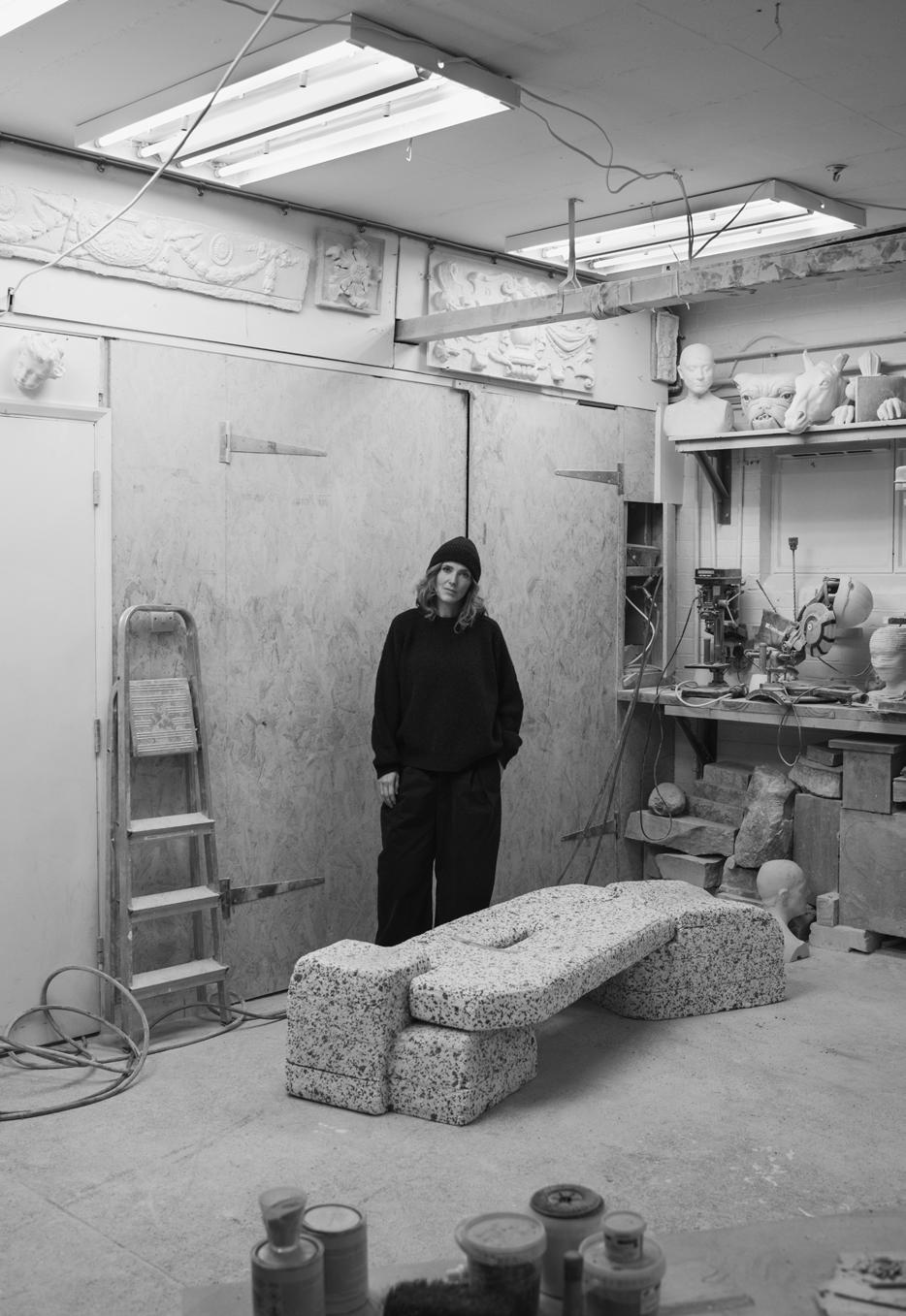














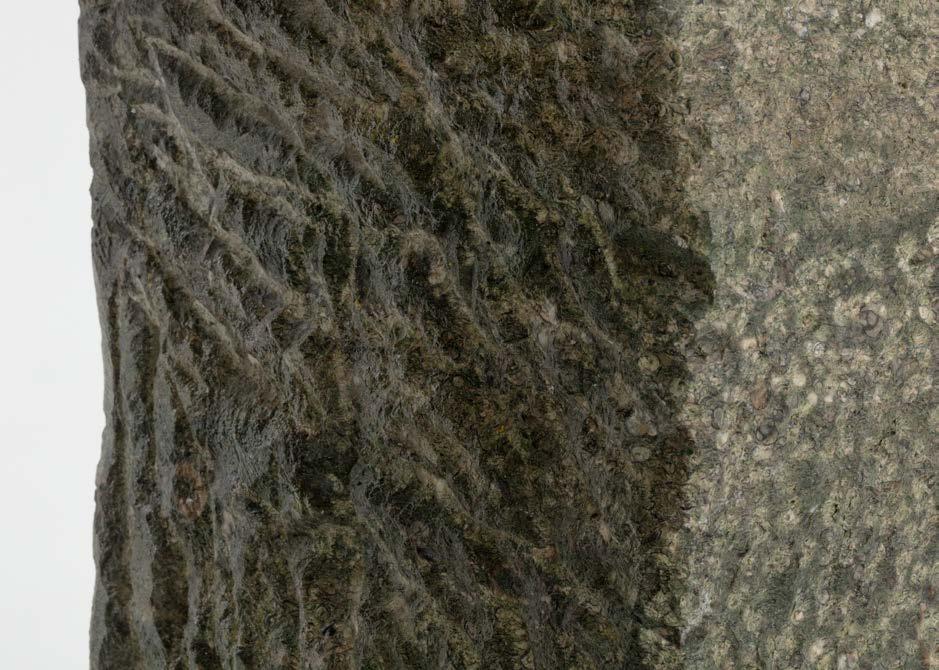
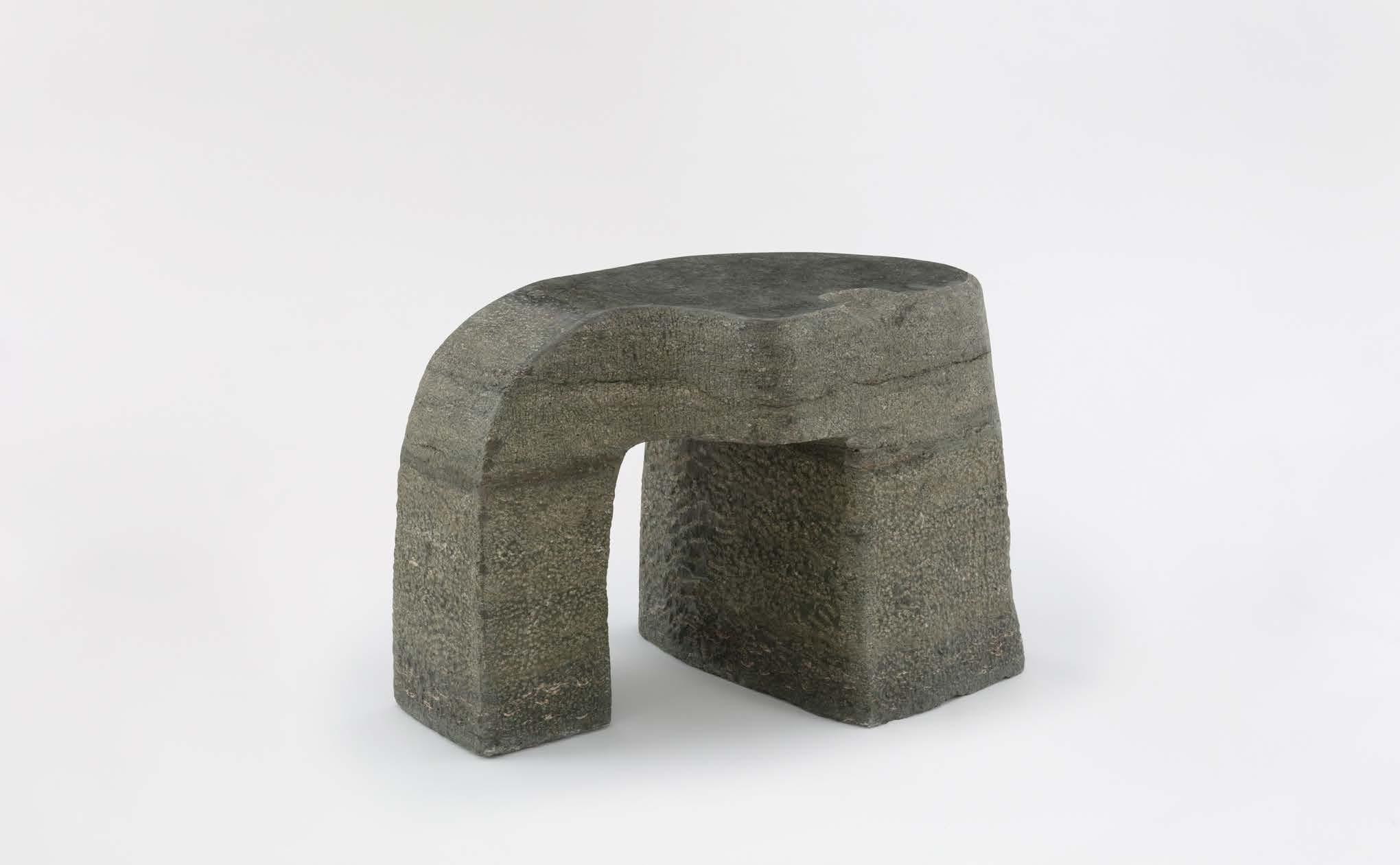




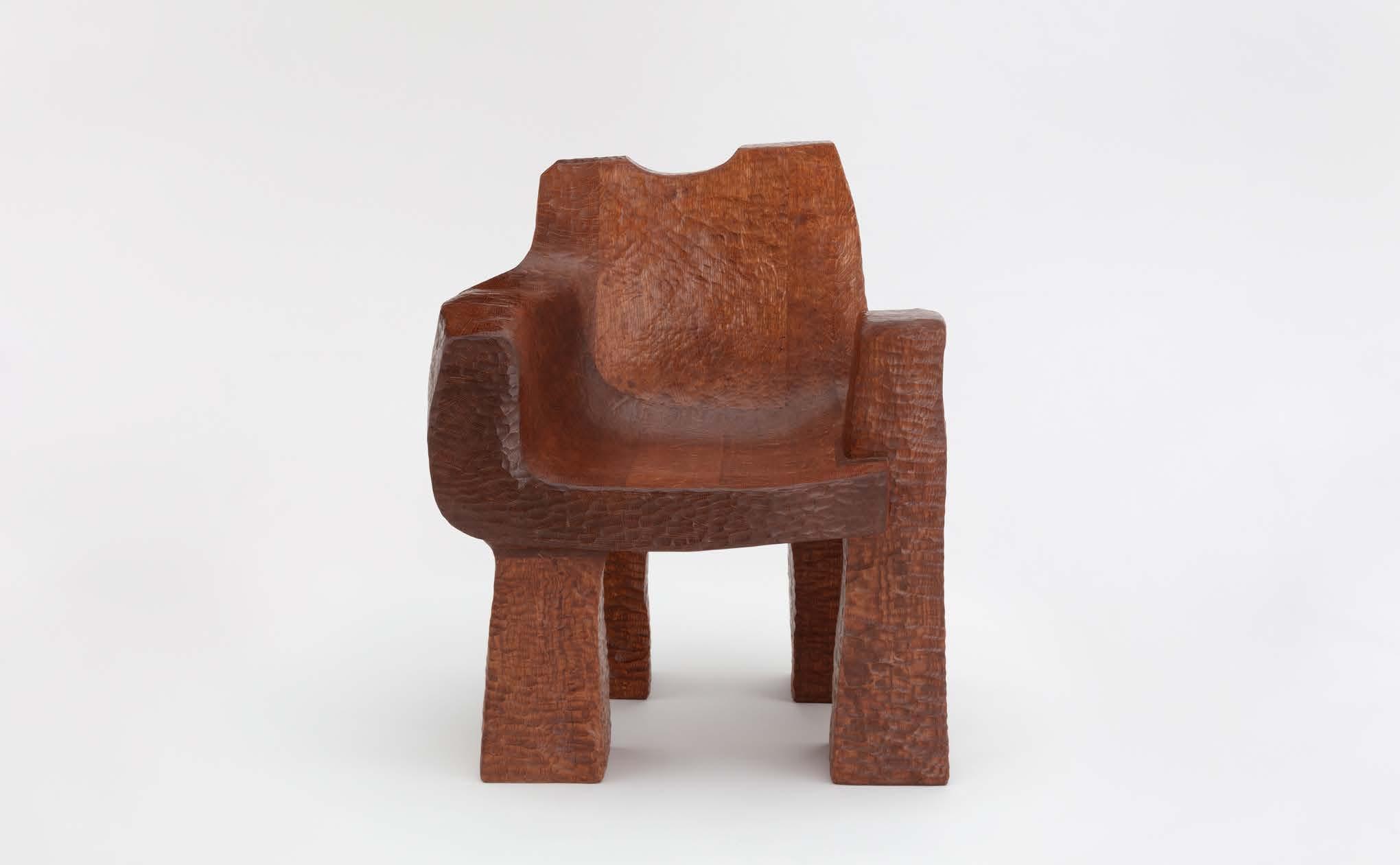


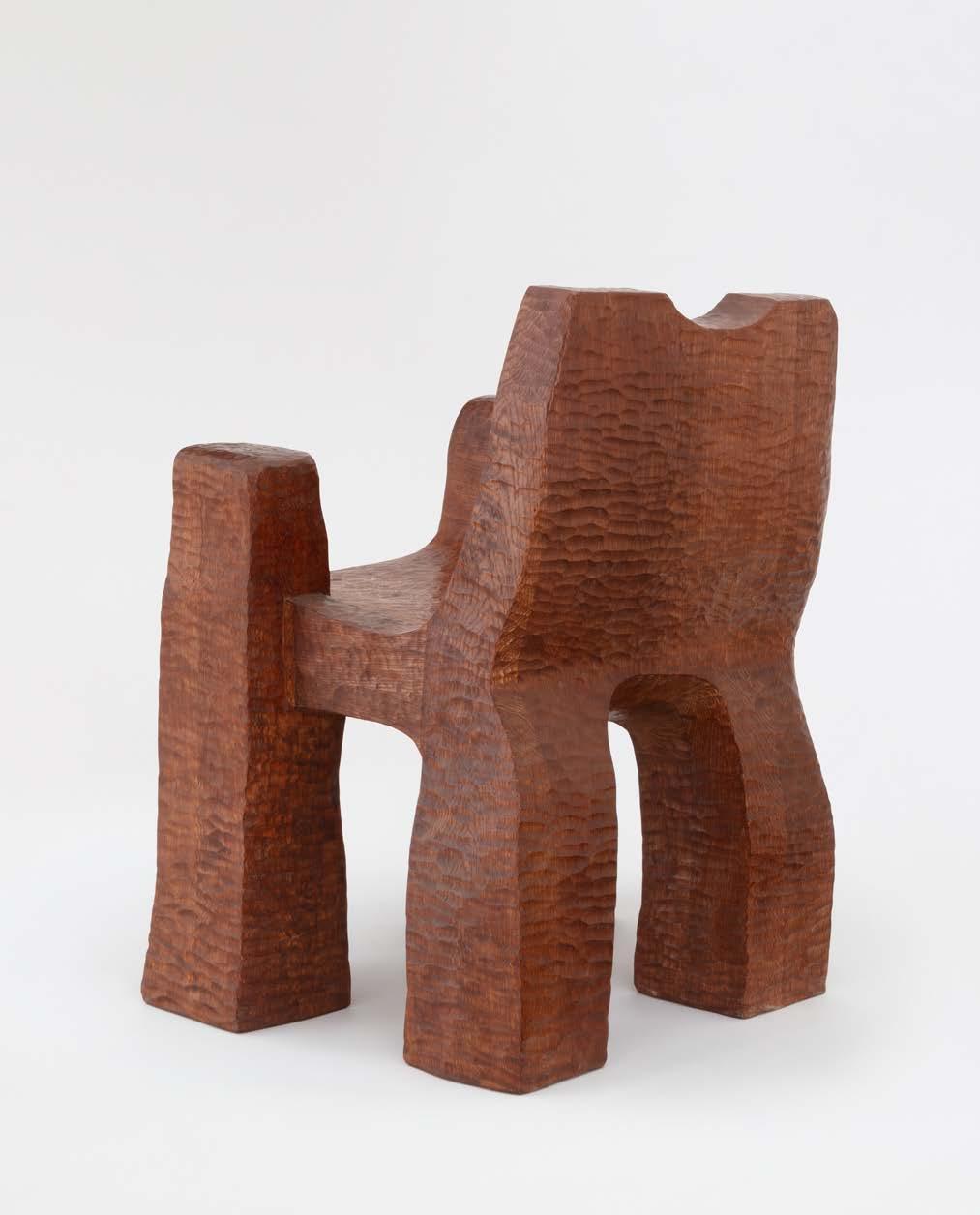































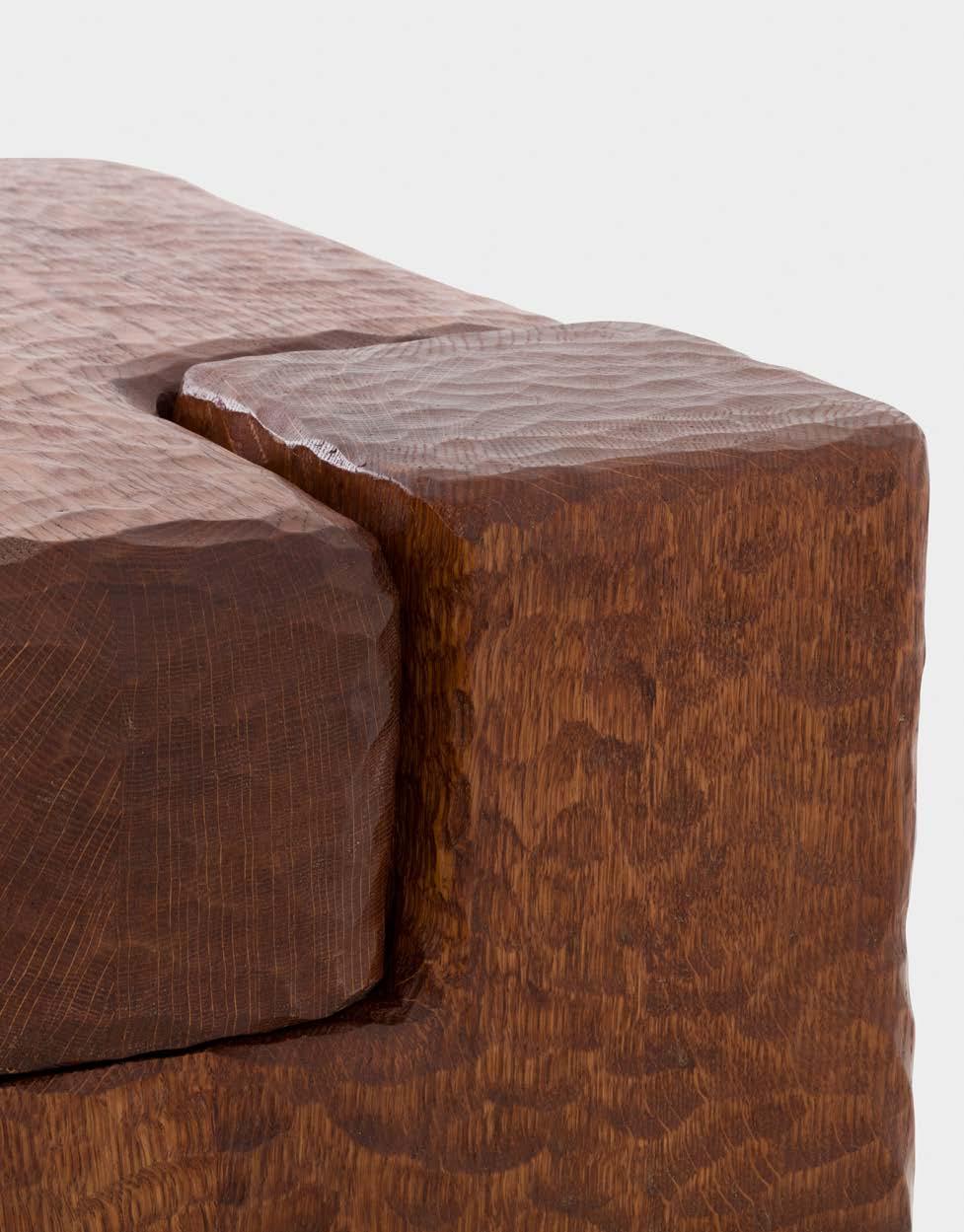


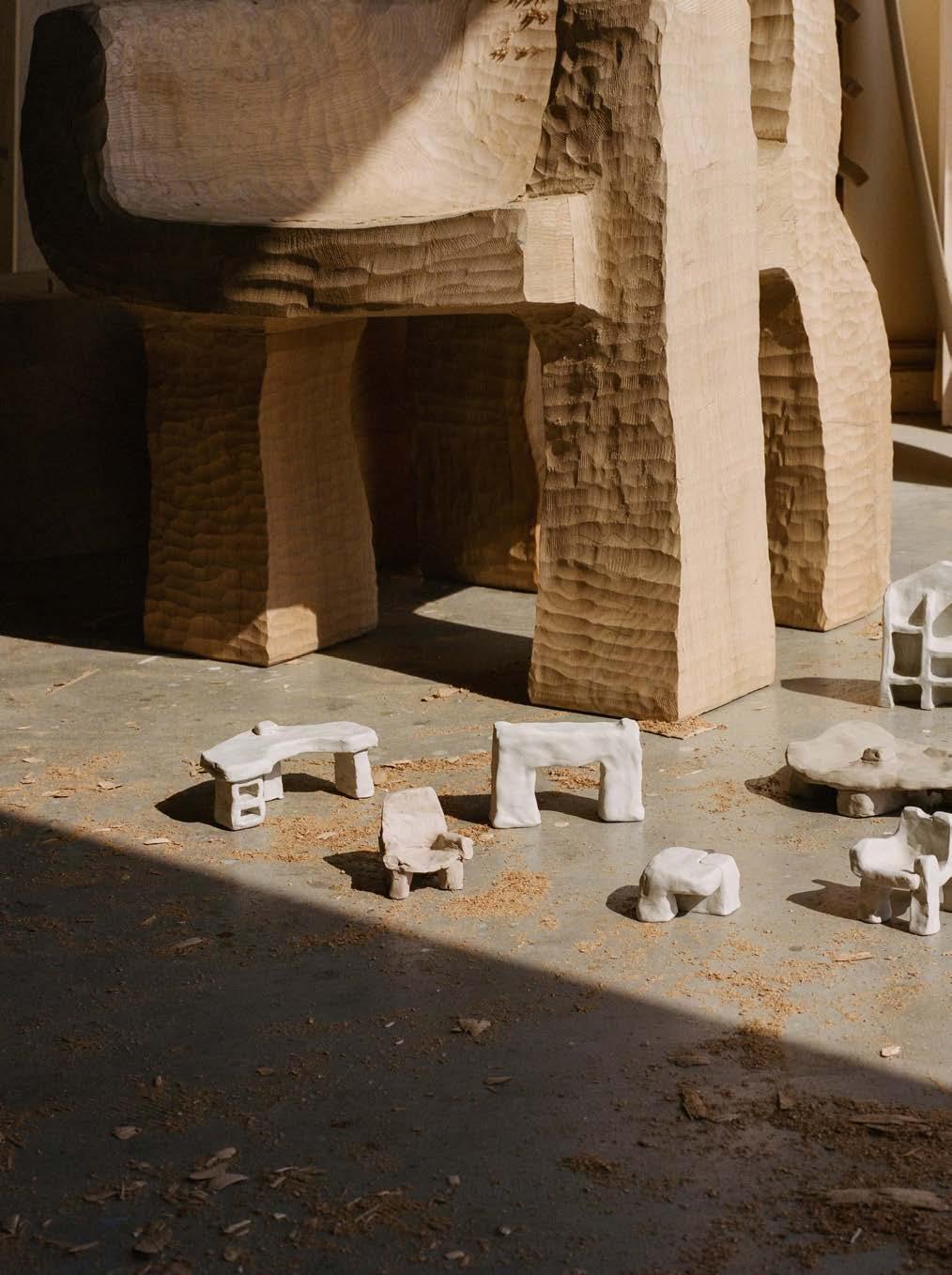




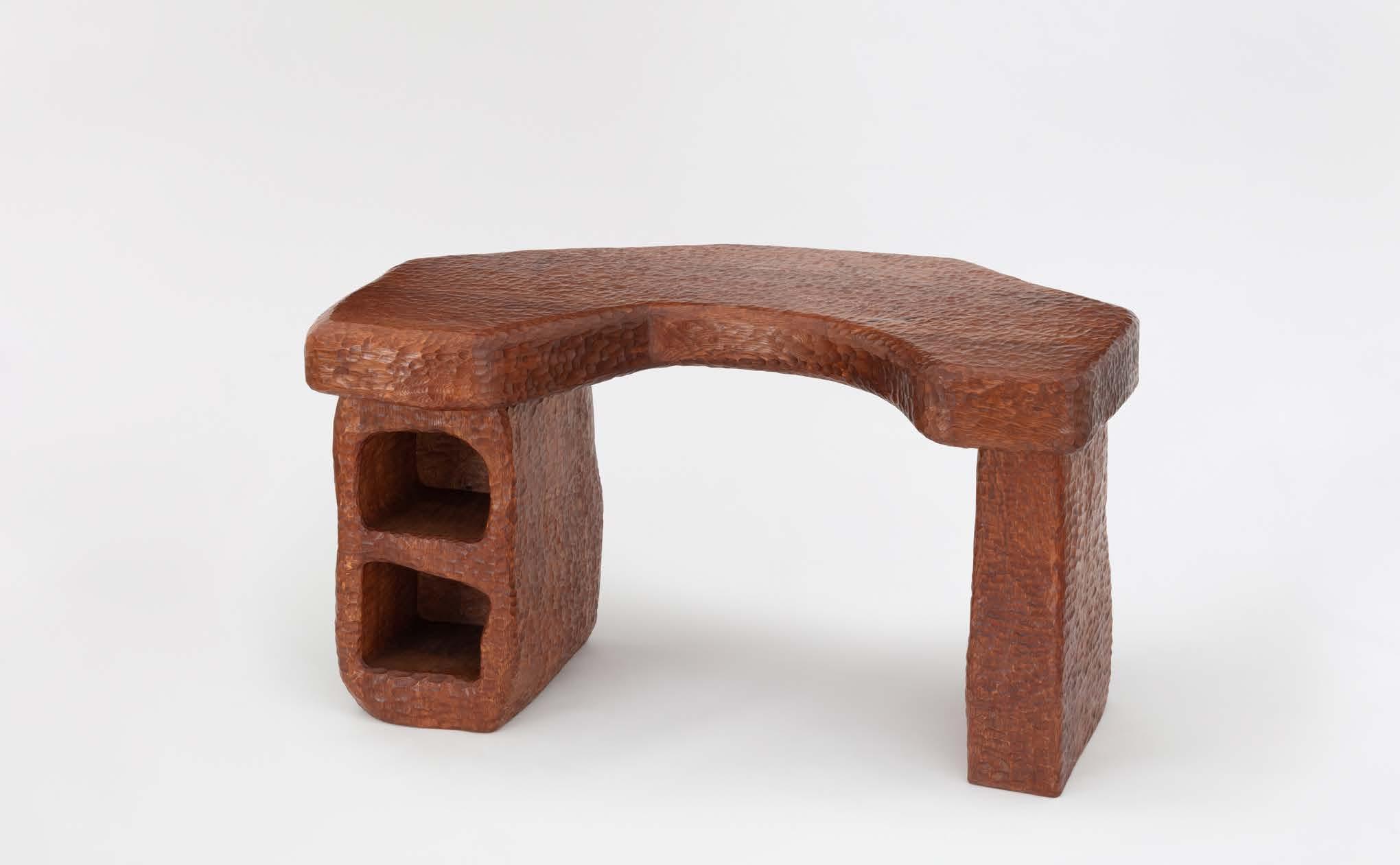






List of Works
04, 05
Plot II, 2022
Hand-carved Purbeck marble
14.5 x 62 x 41 inches
37x 157 x 104 cm
Edition of 8, 4AP
07, 08
Plot II, 2022
Hand-carved oak
14.5 x 62 x 41 inches
37x 157 x 104 cm
Edition of 8, 4AP
11-13
Channel, 2024
Hand-carved Purbeck marble
19 x 78.75 x 25.5 inches
48 x 200 x 65 cm
Edition of 8, 4AP
14–16, 31
Barrow, 2022
Hand-carved Purbeck marble
20 x 27.5 x 17.75 inches
51 x 70 x 45 cm
Edition of 8, 4AP
18, 20, 21
Cairn, 2022
Hand-carved oak
35 x 30 x 26.5inches
89 x 76 x 67 cm
Edition of 20, 4AP
23, 24
Hill, 2023
Hand-carved oak
30 x 86.75 x 47.25 inches
76 x 220 x 120 cm
Edition of 8, 4AP
26 Hoard I, 2023
Hand-carved bog oak
17.75 x 13.75 x 13.75 inches
45 x 35 x 35 cm
Edition of 3, 4AP
26–27
Hoard II, 2023
Hand-carved bog oak
16.5 x 12.5 x 12.5 inches
42 x 32 x 32 cm
Edition of 3, 4AP
29–30
Pile, 2022
Hand-carved oak
16.5 x 20 x 16.25 inches
42 x 51 x 41 cm
Edition of 20, 4AP
31–33
Barrow, 2022
Hand-carved oak
20 x 27.5 x 17.75 inches
51 x 70 x 45 cm
Edition of 20, 4AP
35-37
Lode II, 2022
Hand-carved Purbeck marble
34.75 x 47.25 x 13 inches
88 x 120 x 33 cm
Edition of 8, 4AP
39–41
Lode I, 2022
Hand-carved oak
34.5 x 47.25 x 13 inches
92 x 147 x 41 cm
Edition of 8, 4AP
43–45
Pit, 2022
Hand-carved oak
35.5 x 55 x 21.75 inches
75 x 187 x 107 cm
Edition of 8, 4AP
47, 49
Mound I, 2022
Hand-carved oak
29.5 x 73.5 x 42 inches
75 x 187 x 107 cm
Edition of 8, 4AP
50 Mound II, 2022
Hand-carved oak
29.5 x 55 x 35.5 inches
75 x 140 x 90 cm
Edition of 8, 4AP
53,54
Hollow II, 2022
Hand-carved oak
35.75 x 17.25 x 19.25 inches
91 x 44 x 49 cm
Edition of 20, 4AP
INTERIOR PHOTOGRAPHY
22
The Oak Room Chatsworth House Mirror Mirror 2023
34 The Chapel Chatsworth House Mirror Mirror 2023

“And did those feet, in ancient time, walk upon England’s mountains green?” Depth Charge: Faye Toogood’s Assemblage 7
Beauty, they say, is in the eye of the beholder. So too is contemporaneity. For many involved in design today, relevance is a rapidfire affair. Fast fashion, just-in-time manufacturing, seasonal collections, trend forecasts: all come and go at speed. In this ongoing procession of planned obsolescence, ideas abandoned as soon as their value has been extracted, leaving a churning wake of physical waste behind. But there is another way to understand “the now.” It need not be experienced instantaneously, as the briefest of intervals between past and future. The present moment can also be viewed expansively, extending back decades, centuries, even millennia, indeed, across the whole domain of shared human ancestry. After all, against the backdrop of geological, planetary, and cosmic time, homo sapiens’ seven-odd-million years on earth is only the briefest of intervals.
It is within this grand scheme of things that Faye Toogood operates has created Assemblage 7: Lost and Found. Her framework of reference spans deep time, equally taking in modernist abstract sculpture, seventeenthcentury chests and chairs, medieval church architecture, and ancient standing stones, and finding the commonality between these apparently distant things. Her carefully chosen term “assemblage,” with its implication of gathering and arranging things, is to be distinguished from the more conventional idea of a collection. She is among other things a fashion designer, and in that context necessarily operates in relation to the industry’s demanding Spring/Summer, Autumn/Winter rhythm. When creating objects, though, she is free to adopt a more encompassing approach. And so she does, steady as she goes.
The new Assemblage is only her seventh, after fifteen-odd years of object-making, and it has been gradual in its formation. It evolved organically from her previous Assemblage, (“Unlearning”), which was similarly based on small handmade models, and had its own long inception. As is obliquely implied by the title “Lost and Found,” Toogood is returning to forms and procedures that have preoccupied her throughout her career, previously set aside and now picked up again for new use. For example, the distinctive carved oak that features so prominently here has its roots in her project Cloakroom, presented at the V&A during the London Design Festival in 2015, for which she created a series of wearable garments as well as sculpted equivalents to them: in oak, in marble, a carapace of metal rivets. For Assemblage 7, she returned to the same artisans who had done the woodcarving for that project – a familyrun firm in Somerset who specialize mainly in historic interiors – and
embarked on a much more ambitious collaboration. The primary timber used is European oak (Quercus robur), which has a strong pattern of overlaid flecks and rays. As the wood must be laminated together from 90-millimeter boards, the construction – especially those with multiple exposed faces, like the Heap armchair – requires intensive figure-matching so as to unify the composition, rather than creating a checkerboard effect. The monolithic impression is further enhanced by a custom shellac finish in a warm, reddish brown, redolent of how Tudorera furnishings might have looked when they were new. Assemblage 7 also includes objects fashioned from bog oak, sourced from Ukraine – wood that’s been sitting in a peat marsh for time beyond reckoning, perhaps thousands of years. Protected from decay by its immersion, it undergoes a process of partial fossilization while absorbing tannins from the vegetal muck, becoming extremely hard, dense, and rich in color.
As for the other signature material in Assemblage 7, Purbeck marble – it makes bog oak look brand new. Named for the peninsula in Dorset where it is sourced, the stone is not a true marble but a deposit of limestone and fossilized shells, which formed in the ancient seabed over the course of about six million years. It has been quarried as a decorative stone since Roman times, and can be seen in many of Britain’s most important medieval buildings, among them Westminster Abbey. It is easy to see why it has had such prominence: cutting and polishing reveals a surface of lace-like pattern, punctuated by the intricate whorls of individual shells. This too is a difficult material to shape, recalcitrant and heterogeneous, and to work with it, Toogood turned to a London-based stone shop that has extensive experience in working for artists, as well as in architectural restoration. As with the oak boards, multiple pieces of the stone must be combined into the monumental works – the “bedding” of the Purbeck marble is relatively shallow, with seams of clay running through it, so there is a dimensional limit to the material. Yet they are combined into a powerful integrity; these works are built to last over centuries and more to come.
Whether the finished result is to be in timber or stone, Toogood and her team follow a similar procedure. Each design is developed first in clay, by hand, and then recreated in the studio at full scale. This prototype is made in polystyrene foam using hot wires and files, a relatively expedient process that preserves the intuitive freshness of the original. The foam is then delivered to the fabricators, who follow its every curve and twist faithfully – the slightly wobbly contours of that first tiny clay model still
present, even as the form is rendered in a far more obdurate material. To index this process of translation – and emphasize the artisanal quality of the objects – tool marks are left on the finished piece, rougher at the bottom and transitioning to finer, subtler faceting and then a smoothly polished surface. Especially in the case of the Purbeck marble, the effect is positively archaeological; one feels the forms emerging out of the ancient mass, hard-won, into the light.
The present exhibition marks the third presentation of works from Assemblage 7, a further layer to a stratigraphy. The first five pieces (four in wood, one in stone) debuted in 2022 at Friedman Benda’s Los Angeles location. The following year, in the exhibition Mirror Mirror: Reflections on Design at Chatsworth, which I co-curated with Alex Hodby, a larger grouping was shown in the great English country house’s chapel and adjoining Oak Room, spaces replete with baroque detail and historic ambience. As Toogood’s creations were put into place, a strange inversion occurred. Though they had been completed only weeks earlier, they made their surroundings (which date to the 17th and 19th century) seem brash and new. It was as if they had always been there, and Chatsworth had been constructed around them. They felt, too, like portals to elsewhere: to open fields, tilled by countless generations; and to the sacred circle of Stonehenge, where rites we can only guess at were performed over the centuries.
Now these physical profundities have made their way to New York City. If anything, they seem even more needed here, in a metropolis that rushes past its own past, hurtling ahead to the next, and the next. Standing in the exhibition at Friedman Benda, taxicabs passing by on the street outside the gallery, you feel the true complexity of time, the paradox of the now, which is always at once a layered accumulation and a fleeting instant; an infinite assemblage – and a single flash of illumination.
Glenn Adamson is a curator and writer who works at the intersection of craft, design history and contemporary art. He has previously been Director of the Museum of Arts and Design; Head of Research at the V&A; and Curator at the Chipstone Foundation in Milwaukee.
fayetoogood.com friedmanbenda.com
Faye Toogood
Jan Rose
Nathanael Hunt
Matan Fadida
Josephine Howard
Jenny Scott Russell
Katie Acornley
Alannah Cooper
Product Photography
Angus Mill
Portrait Photography
Genevieve Lutkin
Process Photography
Genevieve Lutkin
Graphic Design
StudioSmall
Texts
Glenn Adamson (Essay)
Special Thanks
Friedman Benda
Glenn Adamson
Jan Rose
Nathanael Hunt
Matan Fadida


